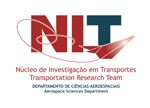10th Workshop APDR - 15th April 2011 - Covilhã
Functional Articulation of Transboundery Accessibility in Low Density Regions
The transboundery regions that resulted from the Europe old borders are today territories with a lot of diversified characteristics. Programs of transboundery cooperation as the INTERREG resulted in several initiatives that contributing for the economic development of the related regions also concurred for the economic and social cohesion of the Europe. For the success of these initiatives there is a need to congregate a wide set of local factors of social and economic characteristics.
The Spanish-Portuguese border is one of the oldest in Europe, assumed to be a geographic space where the populations of both sides share historical, cultural and economic elements. However, much of this territory is considered peripheral in the context of Spain and Portugal and the intrinsic lack of population and capacity of investment is against actions aiming to improve regional development.
The transport infrastructures, and the accessibility they provide, are a factor that may contribute significantly for the regional development. These regions benefited recently from some of these infrastructures, mainly road traffic, as a consequence of public investments supported by Trans-European Networks (TEN-T) programs. One expects that in a next future the expansion of the transport networks allows the companies to operate at lower costs and with bigger productivity profits thus contributing to develop the local and regional economic activity. Nevertheless, this influence as not been as intense as desirable for the local development.
The debate around the Functional Articulation of Transboundery Accessibility in Low Density Regions is related with some questions that worry local and regional stakeholders:
- The transport infrastructures, in transboundery low density regions, may effectively act as catalyst to local and regional development?
- Which is the effective weight of transport infrastructures in the success/failure of local and regional development initiatives in such transboundery regions?
- Which are the main changes to carry through in the actual regional and local network of transport infrastructures so that they may become more useful to the development: better and/or new linkages? And what about to consolidate the secondary road network?
| Sponsors: | |||
 |
|||
 |
|||












